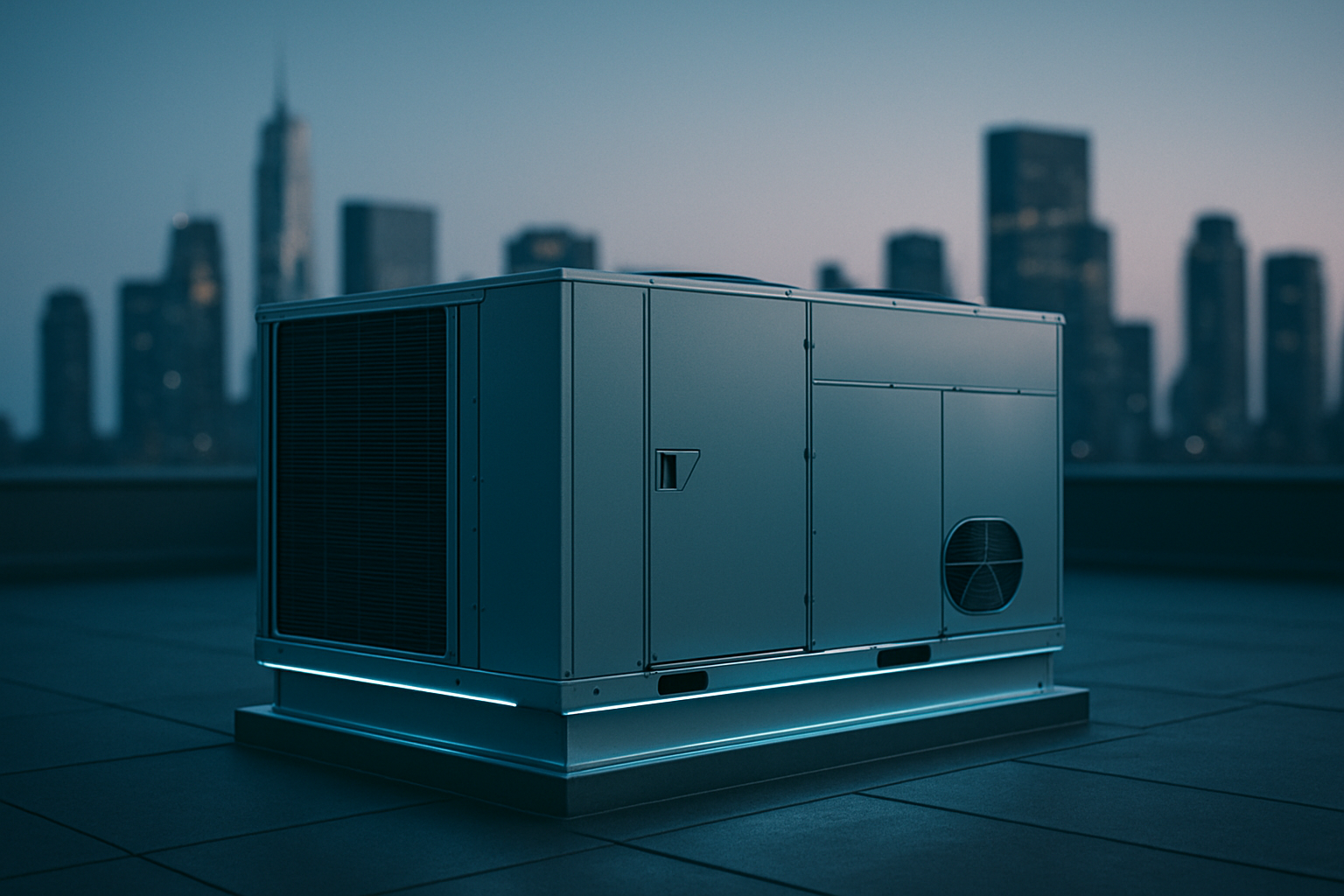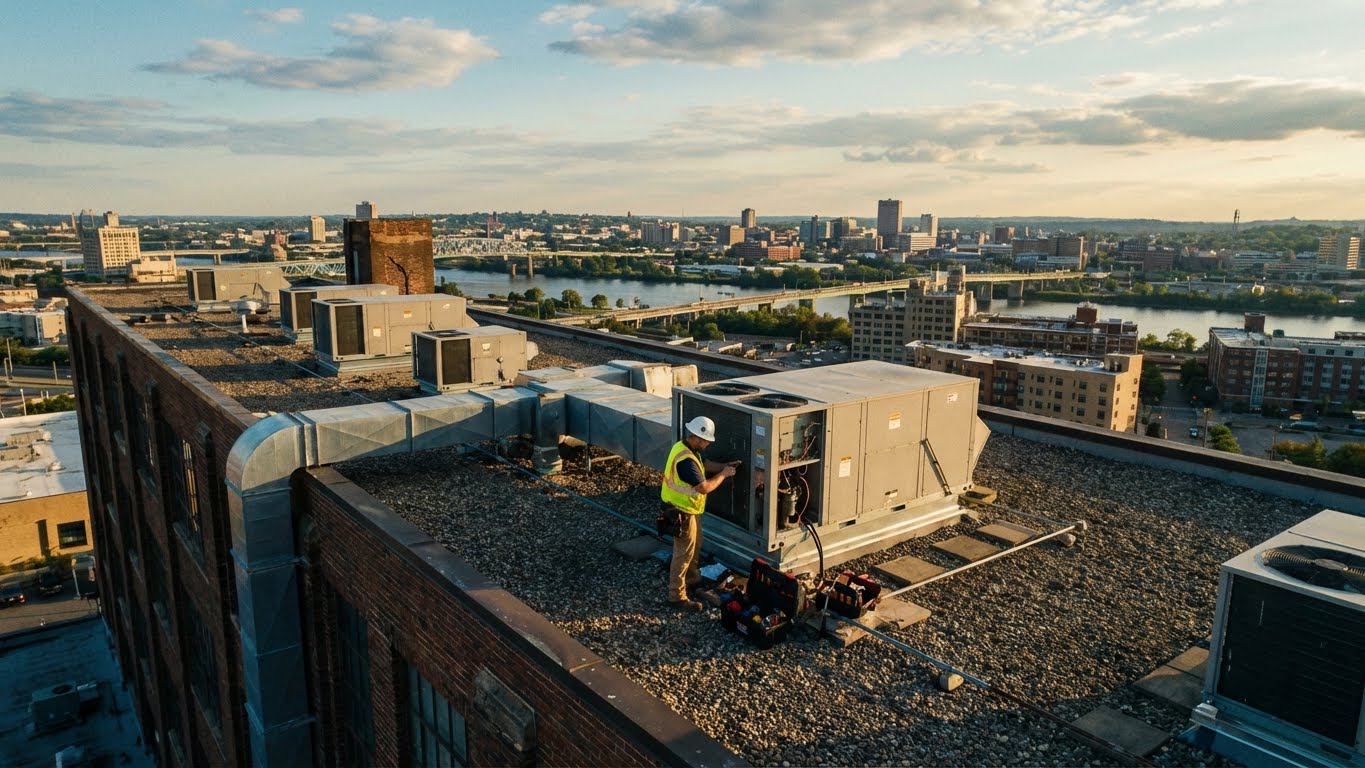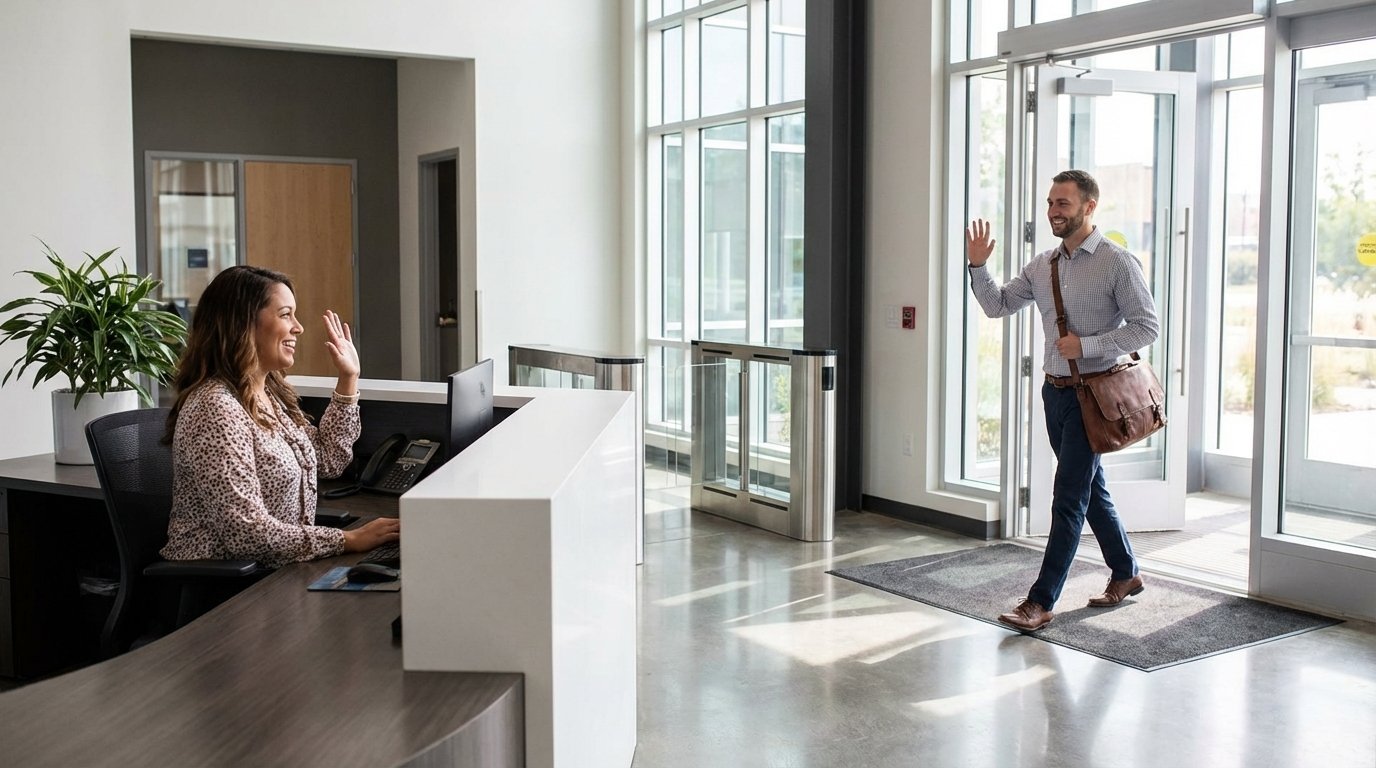Imagine walking into your building on a sweltering summer afternoon, only to find the lobby cool and comfortable. Or think about a freezing winter morning when your tenants arrive to a warm office. Who makes that comfort possible? Chances are, it’s your packaged rooftop units (RTUs) working behind the scenes. You rely on these unsung heroes every day to keep indoor environments pleasant. Understanding your RTUs is a smart strategy that keeps your tenants happy and your operations running smoothly.
In this guide, you’ll learn what RTU units are and how they work, why they’re so important for your building’s performance, and how maintaining them can save you money (and headaches). You’ll also discover how proper RTU care ties directly into tenant experience – a comfortable tenant is a happy tenant, after all. With a little knowledge and consistent effort, you can ensure efficient building operations and keep those complaints about “it’s too hot” or “it’s too cold” to a minimum.
So, let’s climb up (figuratively) to the rooftop and explore how these all-in-one HVAC systems work, and what you can do to optimize them for both energy efficiency and tenant comfort.
What Is a Packaged Rooftop Unit (RTU)?
If you’re not an HVAC specialist, the term “packaged rooftop unit” might sound technical. In simple terms, an RTU HVAC is a heating and cooling system that sits on your building’s roof and handles all the air conditioning for the interior. It’s called “packaged” because all the major components are housed together in one boxy unit up on the roof. This single unit contains everything needed to heat or cool the air: typically an evaporator coil, a compressor, a condenser coil, and an expansion device, plus fans and filters to move air around. In many cases, an RTU also includes heating elements – for example, gas burners or electric heating coils – so it can provide warmth in winter as well as cooling in summer. It’s basically an entire HVAC system compressed into one package, which is pretty convenient for commercial buildings.
You usually find RTUs on flat-roofed structures like offices, retail stores, warehouses, and schools. They’re popular because they save indoor space (everything is on the roof), and they’re easier to install as a single unit. The RTU connects to the building’s ductwork: it pulls air from inside the building, conditions it (heating or cooling as needed), and then pushes the conditioned air back through ducts to all your rooms. Because it’s all one contained unit, a rooftop system can be simpler to maintain in some ways – technicians can service the whole system in one visit up on the roof. They’re essentially the workhorses of many commercial properties, quietly doing their job year-round to keep your tenants comfortable.
One key thing to remember is that RTUs come in various sizes and capacities. They can range from small 3-ton units for a little storefront, up to huge 50-ton (or more) units for a large building. Despite their differences in size, they all work on the same principle: condition the air and circulate it efficiently. Understanding that principle will help you grasp why maintenance is so important.
Why RTUs Are Critical to Building Operations
For something that stays out of sight on the roof, RTUs have a huge impact on your day-to-day building operations. First and foremost, they are responsible for maintaining the climate inside your property, which directly affects occupant comfort. If an RTU fails on a 95°F day, your tenants will be sweating and phones will be ringing at your office. Similarly, a heating failure in mid-January could make parts of your building unusable until fixed. As a building operator, avoiding these scenarios is a top priority – and it’s why paying attention to RTUs is worth your time.
Beyond comfort, there’s a significant financial aspect. Heating, cooling, and ventilating a commercial building typically accounts for a large chunk of the energy bill. In fact, HVAC systems can consume roughly 40% of a commercial building’s total energy use. This means any inefficiency in those rooftop units – say, from dirty components or poor tuning – can drive up your operating costs quickly. Think of an RTU like a car: if you never change the oil or air filter, the car guzzles more gas and might break down. Similarly, neglecting basic maintenance on an RTU can reduce its efficiency by around 5% per year. That gradual drop means each year your unit will use more electricity to do the same cooling, which is money out of your budget. Even something as simple as a clogged air filter can increase an RTU’s energy use by 5–15% by making the fan and compressor work harder. The bottom line is that well-maintained equipment runs closer to its optimal efficiency, keeping your utility costs in check.
Reliability is another operational concern. If you have tenants like retail stores, restaurants, or critical facilities (think data centers or labs), a heating or cooling outage isn’t just an inconvenience – it can halt business and damage your reputation as a landlord. Studies show that reactive “run-to-failure” maintenance can cost three to five times more than a planned preventive approach. Unplanned breakdowns come with premium repair bills (emergency labor rates, rush shipping for parts) and sometimes costs like overtime for your staff or compensating tenants. By contrast, investing in regular upkeep of your RTUs greatly cuts down the chance of surprise failures. In many cases, you can reduce the risk of HVAC breakdowns by up to 95% with proactive maintenance, according to facility management research. Think about that – nearly eliminating a category of emergency calls by being disciplined with routine checks. It pays off not just in direct costs but in keeping your operations smooth. You have plenty of other fires to put out in property management; a well-maintained RTU ensures that the building climate isn’t one of them.
Lastly, let’s touch on asset longevity. An RTU is a big capital investment – these units cost tens of thousands of dollars to replace. You want them to last as long as possible. With proper care, a commercial HVAC unit like a rooftop package can last 15–20 years. Without it, that lifespan can shrink to as little as 10–12 years. In other words, neglect could chop off a good 30-40% of the unit’s expected life. Replacing an RTU early isn’t just annoying to plan and budget for, it’s an expense that could have been deferred for years with basic maintenance. By preserving your equipment life, you also spread out and better plan those large capital expenditures, which any asset manager will appreciate.
In summary, your RTUs directly affect energy consumption, operational reliability, and capital expenses. By understanding their importance, you can prioritize their care appropriately – which leads us to how this all ties into arguably your biggest priority: the tenants.
Tenant Experience: Comfort and Confidence
Your tenants might never see the rooftop units, but they absolutely feel the effects of how well those units are performing. From a tenant’s perspective, one of the most noticeable markers of a well-run property is consistent, comfortable indoor temperature and air quality. Think about the complaints you hear most often. Chances are, “It’s too cold in my office” or “It’s too stuffy in here” ranks high on the list. In fact, industry surveys have found that the majority of tenant service requests relate to comfort issues like temperature control. This isn’t surprising – nobody wants to work or shop in an uncomfortable environment. If your RTUs are unreliable or poorly maintained, you’ll likely deal with frequent hot/cold calls from tenants. And if such problems persist, tenant satisfaction can take a hit. A study by the Building Owners and Managers Association (BOMA) found that thermal comfort is one of the primary factors in tenant satisfaction – most tenants cite temperature control as a top concern for their workspace. It’s simple: when you keep the HVAC running well, you keep the people in the building content.
There’s also an important health and productivity angle. RTUs don’t just manage temperature; they also affect indoor air quality by circulating and filtering air. If filters and coils are dirty, or if the system isn’t bringing in enough fresh air, you could get a buildup of pollutants or carbon dioxide that make people feel drowsy or irritated. According to the EPA, poor indoor air quality can reduce worker productivity by 6–9%. Conversely, a clean and well-functioning HVAC system helps ensure good airflow, proper humidity, and filtration that keep occupants alert and healthier. Particularly after recent public health events, many tenants are very attuned to ventilation and air quality. They want assurance that the building’s HVAC is not only keeping them comfortable but also safe by circulating fresh air and reducing contaminants. By staying on top of your RTU maintenance (like regular filter changes and coil cleaning), you’re directly contributing to a healthier environment that tenants will appreciate, even if they don’t always notice it out loud.
Another aspect of tenant experience is trust and communication. While this is more about your management practices, it ties into HVAC performance. When an issue does arise (say a rooftop unit goes down and a suite gets too warm), how you handle it influences tenant perceptions. If you’ve been proactive, maybe you catch the issue early or have a contingency plan (like portable coolers or quick service response) so the impact on tenants is minimized. Promptly addressing comfort complaints shows tenants you prioritize their wellbeing. Additionally, some property teams send notifications if there will be HVAC maintenance or brief outages, which keeps tenants in the loop. This kind of communication, paired with a track record of maintaining a comfortable building, builds confidence. Tenants might not thank you on a daily basis for a perfectly climatized building, but it contributes greatly to their overall satisfaction and likelihood to renew leases.
In short, well-maintained RTUs = comfortable tenants = happy tenants. And happy tenants tend to stay longer and even spread the word that your building is a great place to be. It all connects. Next, let’s look at what you can do to keep those units in top shape and avoid the dreaded “No A/C” phone call.
Maintenance Best Practices to Extend RTU Life
You don’t need a degree in engineering to keep your RTUs running smoothly, but you do need a routine. A robust preventive maintenance program is your best friend when it comes to these systems. Regular maintenance saves you money in the long run and spares you from many emergency situations.
Here are some best practices for taking care of packaged rooftop units:
- Schedule Seasonal Inspections: Have a qualified technician inspect each RTU at least twice a year, ideally in spring before the cooling season and in fall before heating season. During these check-ups, they should look at all the key components – refrigerant levels, electrical connections, fan motors, gas burners (if applicable), and so on. Catching small issues (like a frayed fan belt or a contactor beginning to fail) before they become big failures can save you a lot. Regular inspections also help ensure the unit is running at its optimal settings for the upcoming high-demand season.
- Change or Clean Filters Regularly: This is one of the simplest yet most impactful tasks. Depending on your building’s use and location (dusty environment, high occupancy, etc.), filters should be replaced or cleaned on a routine schedule (commonly every 1-3 months). Keeping filters clean is an easy win for efficiency and tenant comfort. Make it a visible recurring task in your maintenance calendar – you’ll reap the benefits in lower bills and fewer complaints about airflow.
- Keep Coils Clean: Both the evaporator coils (inside) and condenser coils (outside) accumulate dirt over time. Dirty coils impede heat transfer – meaning your cooling capacity drops and the unit expends more energy. At least annually (and more if your environment is dirty or polluted), arrange for coil cleaning. A technician can vacuum or wash the coils with appropriate solutions. The difference is noticeable: clean HVAC systems can deliver 10-40% better airflow and up to 15% savings on utility bills just from reduced strain. Clean coils also help maintain good indoor air quality by preventing mold and mildew buildup.
- Check and Calibrate Controls: Ensure thermostats and any sensor controls are calibrated and functioning. If your RTU has an economizer (a damper that brings in outside air for free cooling), make sure that’s working correctly too. Sometimes controls get out of whack, leading to issues like the AC and heater running at the same time. Periodic calibration can prevent energy waste and comfort problems.
- Lubricate and Inspect Moving Parts: Blower motors, fan bearings, and damper hinges should be lubricated if they aren’t “sealed for life” components. Listen for unusual noises when the RTU is running – squeaks, grinding, or rattling can indicate parts that need fixing. Replacing a $20 belt or lubricating a motor can prevent a sudden breakdown. During maintenance visits, ask technicians to tighten electrical connections and check for any burnt contacts or wear.
- Maintain Clear Surroundings: Because RTUs sit outside, they’re exposed to weather and sometimes wildlife. Make sure the area around each unit is clear of debris like leaves, and that drain pans and condensate lines (for water) are unclogged. In winter, keep snow from burying the units. Also, ensure no bird nests or leaves are blocking the condenser coil intake. A clear unit can “breathe” properly and will run more efficiently.
By implementing these practices, you create a preventive maintenance loop that keeps your RTUs in top shape. The benefits are huge: studies show that every $1 spent on preventive HVAC maintenance can save you up to $5 in repair costs down the line. You’ll also avoid the scenario of frequent emergency fixes – which often cost significantly more. In fact, emergency HVAC repairs can run 1.5 to 2 times higher in cost than scheduled maintenance visits, due to after-hours labor or expedited parts. It’s the classic case of “pay a little now to save a lot later.” Perhaps even more importantly, you’re avoiding the soft costs of equipment downtime: tenant complaints, potential lost business for your occupants, and stress on your team.
One more tip: document what you do. Keep a simple log for each RTU – when filters were changed, when coils were cleaned, any parts replaced, etc. This helps you stay on track and is useful information if you ever need to troubleshoot persistent issues or justify capital upgrades. Many property teams use commercial property management software to track work orders and set reminders for these tasks to ensure consistency.
Packaged rooftop units may not be the flashiest part of your building, but as you’ve seen, they have a powerful effect on everything from monthly expenses to tenant happiness. By taking a proactive approach—understanding your equipment, keeping up with maintenance, and using tools to your advantage—you ensure that this critical piece of building infrastructure performs at its best. The rewards are real. A well-maintained RTU can run up to 15–20% more efficiently, helping you cut energy costs. And considering that nearly 80% of major HVAC failures stem from lack of maintenance, staying ahead of the curve isn’t just smart—it’s essential. You also build trust with your tenants by providing a space that’s consistently comfortable and well cared for.
That’s where Cove fits in. Cove helps you stay in control of your building operations by making it easy to schedule preventive maintenance, monitor task completion, and track work across every property in your portfolio. Whether you're managing one building or a dozen, you can create standardized checklists for RTU inspections, filter changes, and seasonal servicing—all in one place. Your engineers can log work from the field, your front desk can submit HVAC issues with a few clicks, and you get full visibility into what’s been done and what’s still outstanding. That means no missed maintenance, fewer emergency calls, and less time chasing down updates. Cove gives your entire team a shared portal into what’s happening in the building—so you can catch small issues before they turn into costly ones.
In the end, well-maintained RTUs lead to a virtuous cycle: efficient operations save money, happy tenants renew their leases, and you spend more time improving your assets instead of reacting to problems. Cove helps you make that cycle repeatable. By using a platform built for both building operations and tenant experience, you can stay organized, run efficiently, and deliver the kind of service that keeps everyone—from tenants to asset managers—confident in your approach. So the next time you step into a comfortably cool lobby or a warmly heated office, you’ll know it’s not luck—it’s the result of consistent execution, supported by the right tools.

.png)




